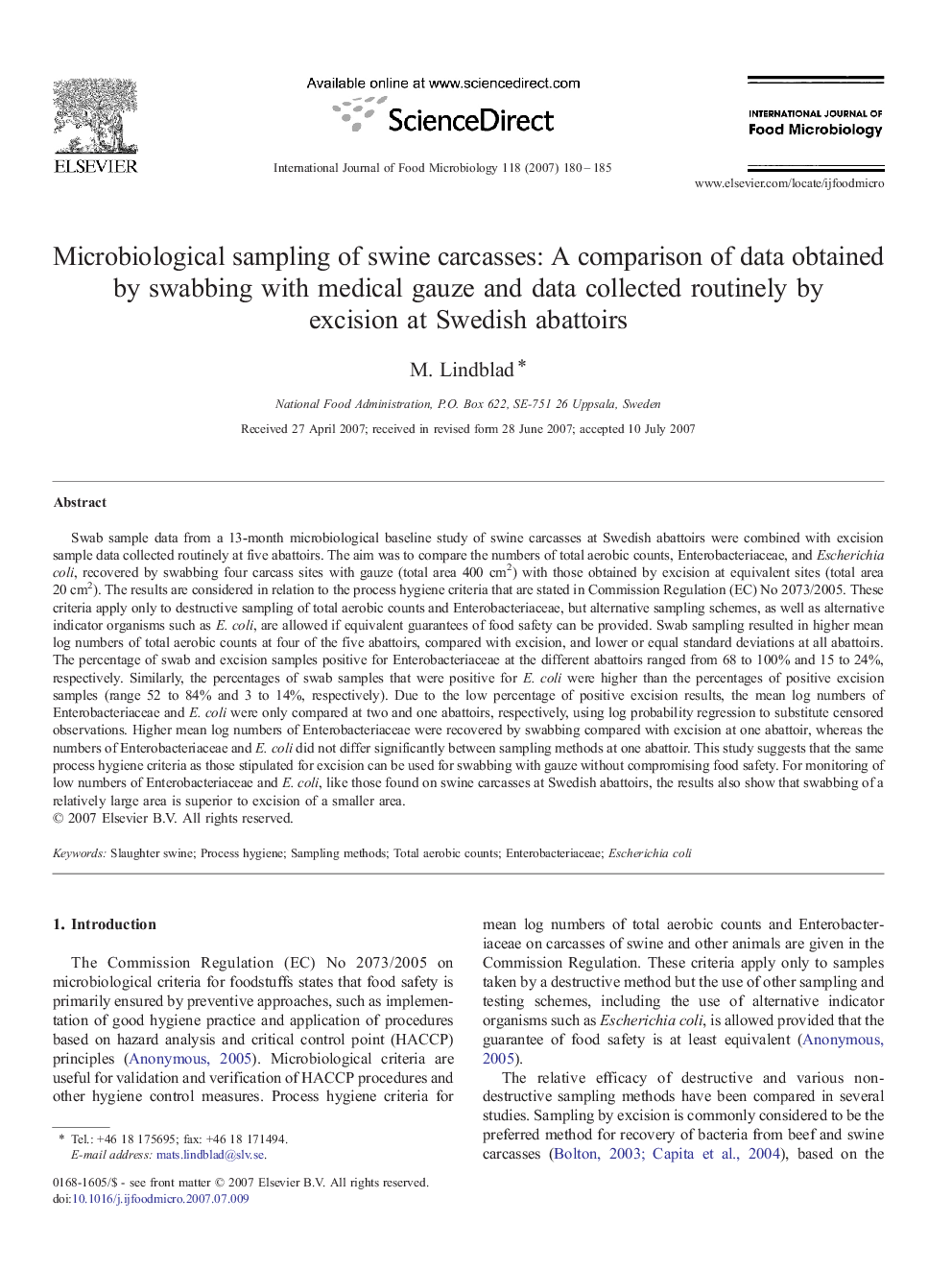| کد مقاله | کد نشریه | سال انتشار | مقاله انگلیسی | نسخه تمام متن |
|---|---|---|---|---|
| 4369477 | 1616740 | 2007 | 6 صفحه PDF | دانلود رایگان |

Swab sample data from a 13-month microbiological baseline study of swine carcasses at Swedish abattoirs were combined with excision sample data collected routinely at five abattoirs. The aim was to compare the numbers of total aerobic counts, Enterobacteriaceae, and Escherichia coli, recovered by swabbing four carcass sites with gauze (total area 400 cm2) with those obtained by excision at equivalent sites (total area 20 cm2). The results are considered in relation to the process hygiene criteria that are stated in Commission Regulation (EC) No 2073/2005. These criteria apply only to destructive sampling of total aerobic counts and Enterobacteriaceae, but alternative sampling schemes, as well as alternative indicator organisms such as E. coli, are allowed if equivalent guarantees of food safety can be provided. Swab sampling resulted in higher mean log numbers of total aerobic counts at four of the five abattoirs, compared with excision, and lower or equal standard deviations at all abattoirs. The percentage of swab and excision samples positive for Enterobacteriaceae at the different abattoirs ranged from 68 to 100% and 15 to 24%, respectively. Similarly, the percentages of swab samples that were positive for E. coli were higher than the percentages of positive excision samples (range 52 to 84% and 3 to 14%, respectively). Due to the low percentage of positive excision results, the mean log numbers of Enterobacteriaceae and E. coli were only compared at two and one abattoirs, respectively, using log probability regression to substitute censored observations. Higher mean log numbers of Enterobacteriaceae were recovered by swabbing compared with excision at one abattoir, whereas the numbers of Enterobacteriaceae and E. coli did not differ significantly between sampling methods at one abattoir. This study suggests that the same process hygiene criteria as those stipulated for excision can be used for swabbing with gauze without compromising food safety. For monitoring of low numbers of Enterobacteriaceae and E. coli, like those found on swine carcasses at Swedish abattoirs, the results also show that swabbing of a relatively large area is superior to excision of a smaller area.
Journal: International Journal of Food Microbiology - Volume 118, Issue 2, 15 September 2007, Pages 180–185